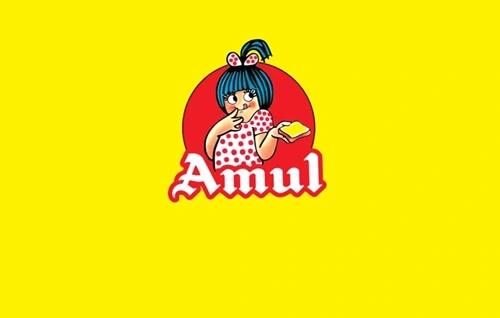Amul, a household name in India, symbolizes the success of the cooperative movement in the country. Founded in 1946, the Anand Milk Union Limited (Amul) has revolutionized India’s dairy industry, empowering millions of farmers and establishing India as one of the world’s largest milk producers. Amul has managed to maintain its leadership and growth by adapting to market trends and consumer preferences. This article delves into a detailed SWOT analysis of Amul, analyzing its strengths, weaknesses, opportunities, and threats, along with the company’s current standing and future outlook in an increasingly competitive and evolving market.

Strengths
1. Strong Brand Equity and Trust: Amul’s brand is synonymous with dairy in India, commanding a significant level of trust among Indian consumers. The brand’s slogan, “The Taste of India,” resonates with millions, giving Amul a solid competitive advantage. This widespread loyalty has allowed Amul to become a household name, essential in retaining market share against rising competitors.
2. Large and Well-Established Cooperative Structure: Amul’s cooperative model, which connects over 3.6 million farmers, is one of its core strengths. By operating as a cooperative, Amul ensures that profits reach its grassroots stakeholders, strengthening its economic foundation and supporting the rural economy. This structure also guarantees a steady supply of milk and helps Amul maintain stable prices, even when the industry faces fluctuations.
3. Extensive Product Portfolio: Amul’s product range spans across dairy essentials like milk, butter, and cheese, along with ice creams, chocolates, and other value-added dairy products. This extensive portfolio allows Amul to cater to a diverse customer base, providing a robust shield against single-segment risk while enabling it to meet changing consumer preferences.
4. Innovative Marketing and Branding: Amul’s advertising campaigns are iconic, especially its “Amul girl” advertisements that often include topical social or political commentary. These campaigns have not only created brand recall but also kept the brand relevant over the decades. By maintaining a culturally attuned marketing strategy, Amul strengthens its connection with the Indian public.
5. Economies of Scale: As India’s largest dairy producer, Amul benefits from economies of scale. Large-scale procurement and processing enable cost efficiencies that help Amul keep its prices competitive. This advantage is crucial in a price-sensitive market like India, where consumers often choose value-for-money products.
Weaknesses
1. Limited Global Presence: Despite being one of the largest dairy brands in India, Amul’s global footprint remains limited. Competitors like Nestlé and Danone have a far more extensive international reach, giving them the upper hand in foreign markets. Amul has attempted to enter international markets but has not been able to establish the same dominance it enjoys in India.
2. Dependency on Indian Market: Amul’s revenue is heavily reliant on the Indian market, making it susceptible to domestic economic fluctuations, policy changes, and market conditions. This limited market diversification poses risks in case of downturns or saturation in the domestic dairy sector.
3. Challenges in Product Consistency and Quality Control: Amul’s expansive cooperative structure brings challenges in maintaining consistent quality and standardization across products. With milk sourced from millions of farmers, ensuring uniformity in product quality can be challenging, occasionally impacting consumer satisfaction.
4. Dependency on Milk Production Cycles: As a dairy company, Amul’s production heavily relies on milk yield cycles, which are seasonal and can fluctuate based on climate conditions, fodder availability, and health of livestock. This dependency can lead to supply inconsistencies, affecting inventory and pricing.
5. Inefficiencies in Supply Chain and Distribution in Remote Areas: Despite its vast network, Amul faces logistical challenges in reaching remote and rural areas, particularly in regions with poor infrastructure. Distribution issues can limit the availability of products in some parts of the country, reducing sales potential in underserved markets.
Opportunities
1. Growing Demand for Healthy and Functional Dairy Products: With a rise in health consciousness among Indian consumers, there is increasing demand for high-protein, low-fat, and fortified dairy products. Amul can capitalize on this trend by expanding its range of health-focused products, such as probiotic milk, lactose-free options, and fortified milk with added vitamins.
2. Expanding into New International Markets: Given India’s status as the world’s largest milk producer, Amul has the potential to leverage this and grow its international footprint. There is substantial demand for authentic Indian dairy products among the Indian diaspora and health-conscious consumers abroad. Targeting markets in Asia, the Middle East, and Africa could bring new growth avenues for Amul.
3. Opportunities in E-commerce and Direct-to-Consumer Models: The growth of e-commerce and demand for convenience in consumer goods present an opportunity for Amul to expand its online presence. By setting up a direct-to-consumer (D2C) channel or partnering with online grocery platforms, Amul can cater to urban, digitally-savvy consumers who value convenience.
4. Increasing Demand for Plant-Based Alternatives: While Amul’s primary focus has been dairy, it could consider venturing into plant-based alternatives, as consumer preferences shift toward vegan and dairy-free options. Amul’s established brand and distribution network would allow it to quickly gain traction if it entered this segment, meeting the demand for sustainable food options.
5. Government Support and Policies Favoring the Dairy Sector: India’s government has implemented policies to support dairy production and encourage self-sufficiency. Initiatives such as the Dairy Entrepreneurship Development Scheme and the National Dairy Development Board’s support are favorable for Amul, enhancing its ability to expand and modernize operations.
Threats
1. Rising Competition from Domestic and Global Players: India’s dairy market is becoming increasingly competitive, with players like Nestlé, Danone, and Britannia expanding their presence. Additionally, local brands and startups are challenging Amul by introducing niche products, such as artisanal cheeses and organic milk, which appeal to specific consumer segments.
2. Price Sensitivity and Fluctuating Milk Prices: As a cooperative, Amul aims to provide fair prices to its farmers. However, this reliance on raw milk prices, which are subject to supply-demand dynamics, poses a risk. Price sensitivity in the Indian market also means that sudden price hikes can lead to a decline in consumer demand.
3. Climate Change and Environmental Risks: Climate change and erratic weather patterns threaten the dairy industry by affecting fodder quality, milk production, and animal health. Such environmental factors can disrupt milk supply and production processes, posing a risk to Amul’s inventory and sales stability.
4. Shifts in Consumer Preferences Towards Non-Dairy Alternatives: The rise of plant-based diets and veganism, particularly among younger consumers, could lead to a decline in dairy consumption. Global players are investing heavily in non-dairy products, and as consumer preferences shift, Amul may face decreased demand for its traditional dairy offerings.
5. Stringent Health and Safety Regulations: As India’s largest dairy brand, Amul is closely scrutinized for quality and hygiene. Increasingly stringent food safety regulations, if not adhered to consistently across its vast cooperative network, could lead to costly recalls, damage to reputation, and regulatory penalties.
Future Outlook
Amul’s strong foundation, backed by its cooperative model and brand loyalty, sets it up well for future growth. However, adapting to changing consumer preferences and increasing competition will be key to maintaining its market leadership. The future holds several promising directions for Amul, particularly if it embraces health-focused, innovative products and capitalizes on the booming e-commerce sector.
To ensure long-term success, Amul may benefit from diversifying its international markets, tapping into plant-based alternatives, and enhancing its quality control processes. With a strategic blend of innovation, expansion, and attention to sustainability, Amul is well-positioned to continue dominating India’s dairy industry while potentially expanding its influence globally, capitalizing on India’s rich legacy of dairy production.

